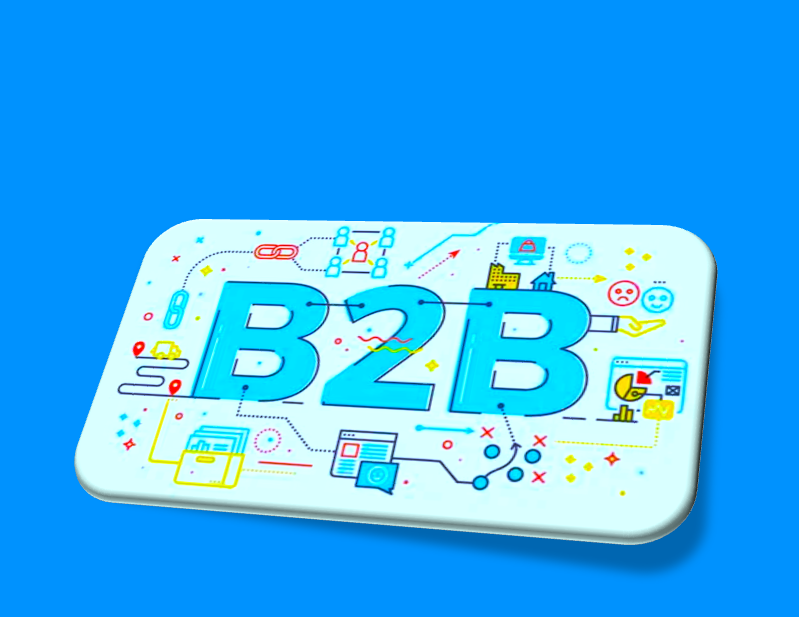Today, your buyers are demanding a totally different kind of buying experience—one that’s connected, aligned, personalized, and responsive. It’s your job to deliver. And we’re here to help. We'll help you revitalize tried-and-true strategies with new, omnichannel, buyer-driven approaches that target buyers and accounts precisely—the demand generation activities that promise the biggest payoffs.
We’re constantly evaluating the performance of demand generation programs and weighing them against investments. While results can vary from program to program, there are a handful of demand gen activities we always rely on to create new opportunities and drive revenue.
1. Define marketing and demand generation goals.
In our work with thousands of B2B marketing teams, we’ve found goals can vary greatly.
Consider these demand gen goals for your team:
- Driving set numbers of leads, MQLs and SQLs
- Reaching certain conversion rates between various funnel stages (i.e., lead-to-opportunity, or MQL-to-SAL)
- Impacting or creating x% of revenue
- Generating brand awareness
- Engaging new contacts or impacting opportunities at target accounts
While documenting annual goals to guide your demand strategy is important, it’s essential to define target outcomes for all core demand generation activities and programs. Remember: You’ll never get anywhere if you don’t know where you’re going.
2. Create helpful content.
Content is the foundation of demand generation. It’s one of our most powerful tools to engage audiences and create demand. Your content toolbox can include blog posts, contributed articles, infographics, whitepapers, eBooks, research reports, guides, webinars, videos, case studies, nurture emails, landing pages, and more.
Given the vast amount of content people must sort through, it’s important that you avoid churning out low quality content just to fill space. A well-defined content strategy should start with your buyer personas. Once you determine what they are, evaluate each persona’s needs, goals and challenges, and then align your content and messaging to the various buying stages for each of those personas.
3. Repurpose high-performing demand generation content.
Creating great content takes time and resources, so it’s important to get as much mileage out of your investments as possible. When we identify pieces of demand generation content that are particularly effective at engaging new contacts or moving prospects through specific stages in the funnel, we look for ways to repurpose that content.
For instance, we created The Enterprise Playbook to Account-Based Demand Generation, which helps B2B marketers develop and implement ABM strategies. Such workbooks have been among our top-performing pieces of content, generating thousands of new contacts. But they’ve also taken hundreds of hours to develop, and that kind of time isn’t easy to come by. So, we use them in a variety of ways.
4. Amplify and distribute your content.
All too often, demand generation marketers develop content, and then it sits on the shelf waiting for people to find it. If you want your content to drive results, your strategy must include a variety of promotional tactics that put your work in front of the people who will benefit from it.
Distribution plans can incorporate various demand generation tactics, including:
- Regular sharing on social media. This is particularly effective with short form, easily digestible content, as well as visual and multi-media assets.
- Emailing to known prospects and customers. This can be instrumental in deepening relationships with people. Sometimes, as much as 50% of our program participation comes from contacts who are already in our database.
- Syndicate through third-party sources. It’s short-sighted to wait for all your potential prospects to stumble upon your latest eBook. Working with trusted media partners who have relationships with your target audiences can be an effective way to boost demand generation results.
- Leverage display advertising. Surround your potential prospects with digital advertising to amplify your messages. Connect your content syndication efforts with display advertising to maximize the reach of your content.
5. Get face-to-face with your prospects.
The pandemic changed buying expectations. Marketers must be ready to meet buyers on their terms, with holistic event strategies that connect in-person, hybrid, virtual events, and webinars. Each of these events is one touchpoint of many on your buyer’s journey to purchase. If you’re investing heavily in events of any kind, you’re likely collecting large amounts of data on your event registrants and attendees. Manually processing that data is not a demand gen activity that drives results. It drains productivity and destroys event ROI.
6. Stay on top of your contact- and account-targeting.
Avoid taking a set-it-and-forget-it approach to audience targeting. While your core buyer and account personas may largely remain the same, you can often obtain new insights by monitoring sales processes and customer data to:
- Ensure your target account list is in sync with your sales team’s evolving targets.
- Evaluate the buying committee. Are you still engaging with the same participants in the sales process? Develop new personas as needed.
- Analyze demographic and firmographic data of your highest value customers to better inform your campaign targeting.
Whether contact- and account-targeting is something you revisit annually or quarterly, it’s a good idea to regularly assess if you’re set up to deliver an omnichannel, buyer-driven, and Precision Demand Marketing experience that:
- Gets your data right. Addresses data accuracy and ensures governance, integrity and global compliance across all lead and customer data.
- Connects your channels. If you want to provide a superb customer experience, you need to know what your customers have done so you can help guide them to what they should do next.
- Adds data intelligence. This allows you to target the right prospects with the right content in the right channel at the right time.
- Integrates your buyer’s journey with your marketing automation platform (MAP), customer-relationship management (CRM) solution, and/or customer data platform (CDP).
- Uses the insights gained from your omnichannel demand approach to scale and optimize your buyers’ journeys.
7. Always test.
Stay agile and creative. Keep testing new demand -gen tactics, strategies, channels, sources, content, creative and more.
You can test program elements, from simple factors like button colors to more complex areas like workflow sequences. Some things our marketing team regularly tests are:
- CTA design and text
- Landing and website page layouts
- Headlines and subject lines
- Blog posting or email sending times
8. Dive into your demand generation data.
All the testing, content development, and creative marketing in the world won’t be enough if instinct is your only guide. Today’s marketers must be guided by data. There’s no shortage of metrics to measure. Yet, if you don't have a way to ensure your data is clean, valid, and compliant, those metrics will be meaningless.
Whether you’re monitoring click-through rates on ads or CTAs, conversion rates on landing pages, or which pieces of content are driving the most new leads, it’s imperative to act on key insights once you validate them.
9. Keep marketing and sales in sync.
Demand generation goes beyond just generating new contacts. It requires a full-funnel approach to guiding prospects through discovery, consideration and purchase. This means marketers and sales pros must work together to:
- Drive toward revenue goals, together. Successful organizations define revenue targets collectively. While each team may have its own plan to reach those goals, it's important to come together (whether weekly, monthly or quarterly) to review progress and identify areas for improvement.
- Identify and engage the right prospects. When developing buyer personas and target account lists, you need to work with sales to identify the right attributes. So, every time you go back to demand generation activity #6, be sure to include some members from your sales team for feedback.
- Deliver the right message at the right time. Sales can benefit heavily from all the great content that marketing creates. But sometimes it can be a lot to sort through. Marketing needs to make it easy for sales to access content, and to identify which content to apply to which prospects at specific stages in the sales cycle. It’s also important for marketing to understand how and when sales pros use content and the impact that it has. There are numerous sales enablement tools that can help with this. If you don’t have a tool in place, consider holding a weekly call with your sales team to keep them in the loop on the content and programs available to them.
10. Work with partners.
Some of the best demand generation results stem from working with great industry partners. So, take time to identify non-competitive companies with complementary products or solutions. Those organizations are often targeting the same prospects as yours, usually with overlapping target-account strategies. Regularly plan events, webinars and co-created content with these partners.
Partner marketing typically reduces the effort and investment for all involve, while increasing the potential audience for your demand generation efforts. The results speak for themselves.
11. Nurture, nurture, nurture.
While there can be numerous reasons for low conversion rates, a lack of nurturing is the top cause. At the same time, nurturing leads to a 50% increase in conversion to sales-ready status. It’s vital that marketers continue to engage with and provide helpful content for contacts who are in early stages of the buying cycle. Persona-, pain- and stage-based nurture tracks are valuable strategies to drive demand generation results.
A good rule of thumb is to always pay close attention to your data. Monitor the open, click through and conversion rates on your nurture emails. Seek to identify any elements from high-performing nurture content that can be pulled through the rest of your workflow. If you don’t yet have a tool in place to automate lead nurturing, it’s time to evaluate marketing automation.
12. Use templates for demand generation projects and programs.
Finally, with all the demand generation activities that need your attention, it’s important to streamline where possible. This might mean automating manual demand gen tasks, implementing new processes to save time, or identifying new tools that will help increase organizational efficiency.
We’ve created numerous marketing templates our team uses to break big projects and demand generation programs up into executable tasks.
Here’s a guide to a 7-point 3rd-party demand gen framework that includes prescriptive advice to execute an effective demand strategy.



